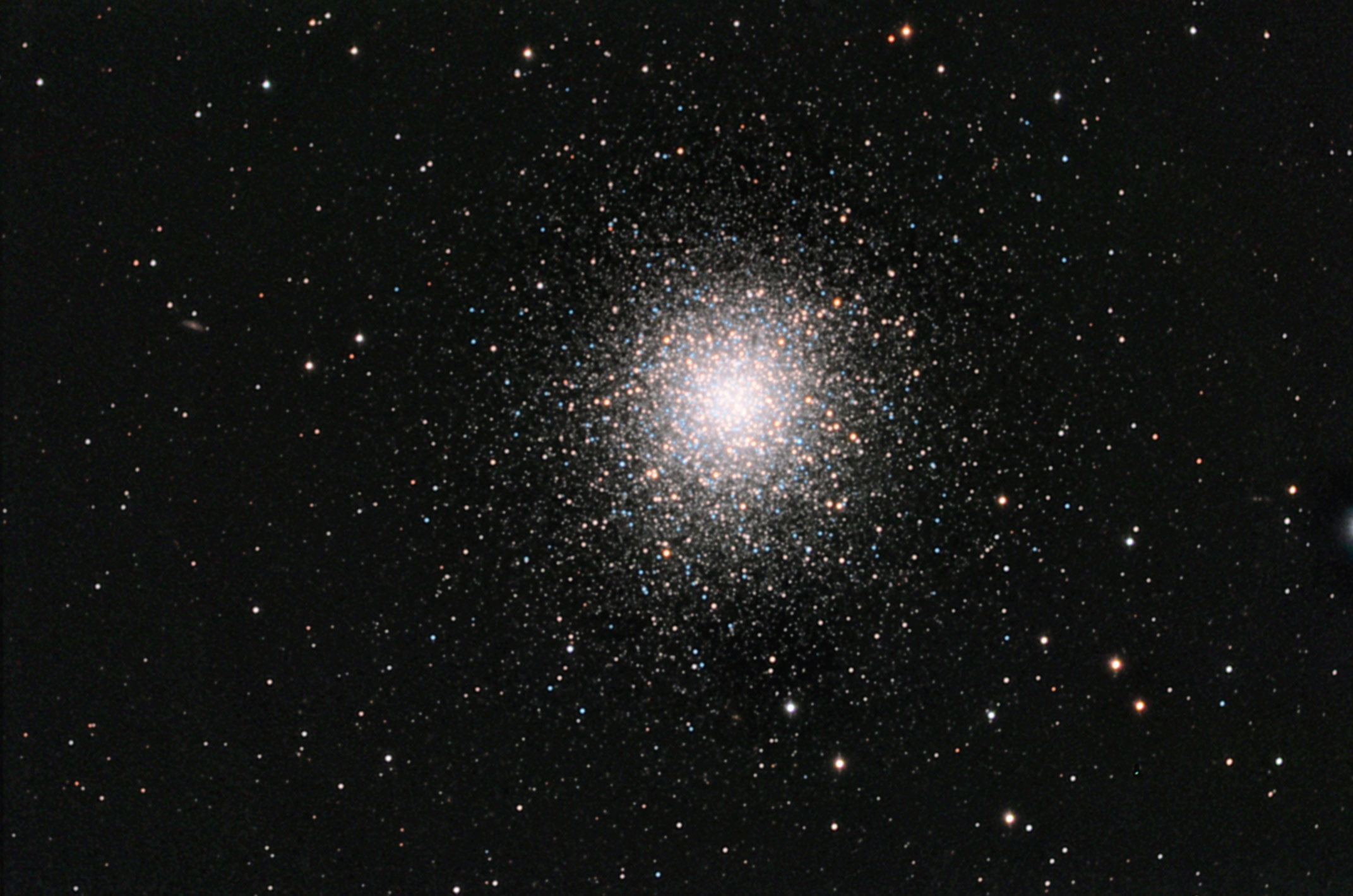News
60 Years Ago – Gordon Cooper’s Solo Mission Closes Out Project Mercury

On May 16, 1963, NASA astronaut L. Gordon Cooper splashed down in the Pacific Ocean, completing the final mission of Project Mercury and the longest American spaceflight up to that time. His 22-orbit Mercury-Atlas 9 mission aboard the Faith 7 spacecraft lasted 34 hours and 20 minutes. He completed 11 experiments and overcame hardware anomalies to manually bring his spacecraft safely back to Earth. In his single mission, Cooper accumulated more spaceflight time than the other five Mercury flights combined, and gave NASA confidence to proceed to Project Gemini, during which astronauts demonstrated the techniques required to meet President John F. Kennedy’s goal to land a man on the Moon and return him safely to the Earth before the end of the decade.
Did a Piece of Halley’s Comet Just Crash Through the Roof of a Home in New Jersey?

A metallic object believed to be a meteorite struck the roof a residence in Hopewell Township, New Jersey. The home was occupied at the time but thankfully there were no injuries. The object is described as approximately 4 inches by 6 inches, is oblong in shape, and appears metallic. It penetrated the roof, the ceiling, and then impacted the hardwood floor before coming to rest. The Hopewell Township Police Department has contacted several agencies for assistance in positively identifying the object, which is believed to be associated with the Eta Aquarids meteor shower. Like most meteor showers, the annual Eta Aquarids are caused by the debris of a comet that once crossed Earth's path. In this case, it's the famous Halley's Comet. This comet visits the inner Solar System every 75 or 76 years, but the associated meteor shower is an annual event. The last time it passed close to Earth was 1986. It will be back again in 2061. If this object can be positively identified as an Eta Aquarids meteorite, then we’ll be able to touch and examine an actual piece of Halley’s Comet.
Kiss the Sky Tonight -- Month of May 2023
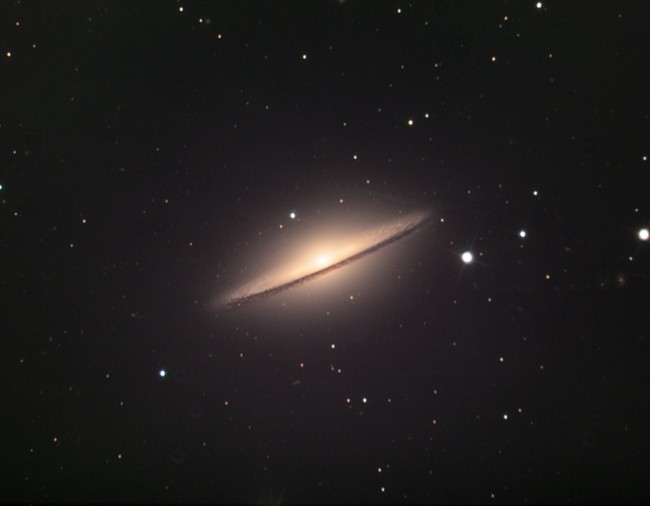
Welcome to the night sky report for May 2023 -- Your guide to the constellations, deep sky objects, planets, and celestial events that are observable during the month. In May, we are looking away from the crowded, dusty plane of our own galaxy toward a region where the sky is brimming with distant galaxies. Locate Virgo to find a concentration of roughly 2000 galaxies and search for Coma Berenices to identify many more. Coma Berenices is a great target for binoculars. Look for galaxies like M104 (Sombrero Galaxy), M87 (Virgo A Galaxy), and M64 (Black Eye Galaxy). The night sky is truly a celestial showcase. Get outside and explore its wonders from your own backyard.
Did You Know That of the Billions of Stars in the Milky Way, Only 449 Stars Have Officially Approved Names?
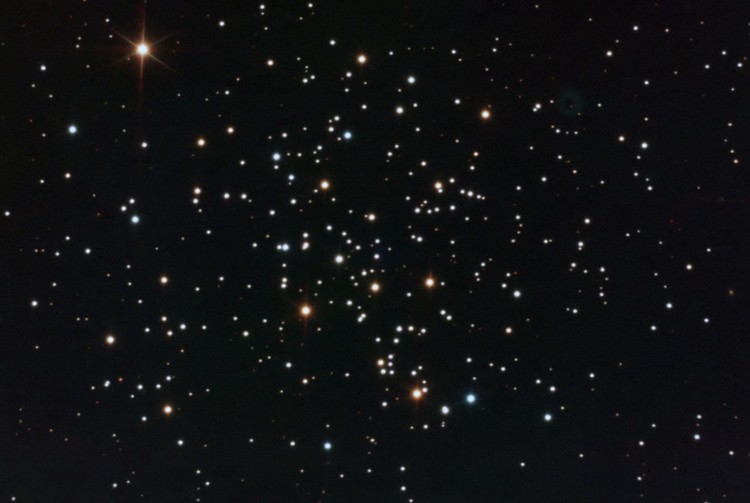
Since prehistoric times, cultures and civilizations all around the world have given their own unique names to the brightest and most prominent stars in the night sky. Certain names have remained little changed as they passed through Greek, Latin, and Arabic cultures, and many names are still in use today. As astronomy developed and advanced over the centuries, a need arose for a universal cataloging system whereby the brightest stars were known by the same labels, regardless of the country or culture from which the astronomers came. In May 2016, a specialized working group was established by the International Astronomical Union (IAU) to formalize star names, many of which had been used colloquially for centuries. The IAU now has a catalogue of stars that includes 449 approved names.
The Unexpected Discovery that Upended Astrophysics Nearly 70 Years Ago

Nearly 70 years ago, astronomer Paul Merrill was watching the sky through a telescope at Mount Wilson Observatory in Pasadena, California. As he observed the light coming from a distant star, he saw signatures of the element technetium. This was completely unexpected since Technetium has no stable forms – it’s what physicists call an “artificial” or “synthetic” element that does not occur naturally on Earth. It has only been created by human manipulation of fundamental particles in a nuclear reactor, a particle accelerator, or the explosion of an atomic bomb. Any technetium present when the star formed should have transformed itself into a different element, such as ruthenium or molybdenum, long ago. As an artificial element, how was technetium created in this star? On May 2, 1952, Merrill reported his discovery -- Stars can create heavy elements. Not only had Merrill explained a puzzling observation, he had also opened the door to understanding our cosmic origins. Not many discoveries in science completely change our view of the world – but this one did. The newly revealed picture of the universe was simply mind-blowing, and the repercussions of this discovery are still driving nuclear science research today.
James Webb Telescope Scores a Stunning View of Uranus, Rings, and Moons

NASA’s James Webb Space Telescope has taken a stunning image of one the Solar System’s ice giants, the planet Uranus. The other ice giant, Neptune, was imaged by JWST last year. The new image features dramatic rings as well as bright features in the planet’s atmosphere. The Webb data demonstrates the observatory’s unprecedented sensitivity for the faintest dusty rings, which have only ever been imaged by two other facilities: the Voyager 2 spacecraft as it flew past the planet in 1986, and the Keck Observatory with advanced adaptive optics. Uranus has 13 known rings. Some of these rings are so bright that they appear to merge into a larger ring. Webb also captured many of the 27 known moons of Uranus.
Kiss the Sky Tonight -- Month of April 2023

Welcome to the night sky report for April 2023 -- Your guide to the constellations, deep sky objects, planets, and celestial events that are observable during the month. During April, near the Big Dipper, you will find several interesting binary stars. You can also spot galaxies like the Pinwheel Galaxy (NGC 5457, M101), the Cigar Galaxy (NGC 3034, M82), and M96 (NGC 3368) -- the last of which is an asymmetric galaxy that may have been gravitationally disrupted by encounters with its neighbors. Also, during the month, the planet Mercury – smallest and fastest moving of the planets in our Solar System – will reach its highest and most visible place in the evening sky for the year. The night sky is truly a celestial showcase. Get outside and explore its wonders from your own backyard.
Radio Interference from Satellites is Threatening Astronomy

Radio telescopes are facing a problem. All satellites -- whatever their function -- use radio waves to transmit information to the surface of the Earth. Just as light pollution can hide a starry night sky, radio transmissions can swamp out the radio waves astronomers use to learn about black holes, newly forming stars, and the evolution of galaxies. With tens of thousands of satellites expected to go into orbit in the coming years and increasing use on the ground, the radio spectrum is getting crowded. Radio quiet zones – regions, usually located in remote areas, where ground-based radio transmissions are limited or prohibited – have protected radio astronomy in the past. As the problem of radio pollution continues to grow, scientists, engineers and policymakers will need to figure out how everyone can effectively share the limited range of radio frequencies.
James Webb Telescope Captures a Wolf-Rayet Star in a Rarely Seen Prelude to a Supernova

The rare sight of a Wolf-Rayet star – among the most luminous, most massive, and most briefly detectable stars known – was one of the first observations made by NASA’s James Webb Space Telescope in June 2022. Webb showed the star, WR 124, in unprecedented detail with its powerful infrared instruments. The star is 15,000 light-years away in the constellation Sagitta. As massive stars progress through their lifecycles, only some of them pass through a brief Wolf-Rayet phase before going supernova. This makes Webb’s detailed observations of this rare phase valuable to astronomers. Stars like WR 124 help astronomers understand a crucial period in the early history of the Universe because similar dying stars first seeded the young Universe with heavy elements forged in their cores – elements that are now common in the current era, including on Earth.
Room Temperature Superconductor Discovered? If these results can be replicated, it will be a game changer

First discovered in 1911, superconductivity gives materials two key properties -- Electrical resistance vanishes and any semblance of a magnetic field is expelled, due to a phenomenon called the Meissner effect. The magnetic field lines have to pass around the superconducting material, making it possible to levitate such materials, something that could be used for frictionless high-speed trains, for example. Powerful superconducting electromagnets are already critical components of maglev trains, Magnetic Resonance Imaging (MRI) and Nuclear Magnetic Resonance (NMR) machines, particle accelerators, and quantum supercomputers. But the superconducting materials used in the devices work only at extremely low temperatures. This restriction makes them costly to maintain and too costly to extend to other potential applications. In an historic achievement, University of Rochester researchers have announced the creation of a superconducting material at a temperature and pressure low enough for practical applications. If these results can be replicated, it will be a game changer.
Kiss the Sky Tonight -- Month of March 2023
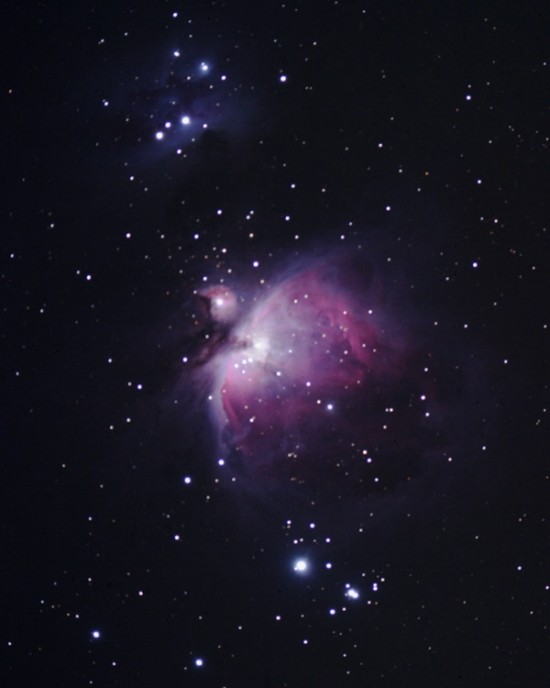
Welcome to the night sky report for March 2023 -- Your guide to the constellations, deep sky objects, planets, and celestial events that are observable during the month. In March, the stars of spring lie eastward. Look for the constellations Gemini and Cancer to spot interesting celestial features like star clusters M35, the Beehive Cluster (M44), and NGC 3923, an oblong elliptical galaxy with an interesting ripple pattern. Find the Y-shaped constellation Taurus the bull, high in the southwest. The Hyades star cluster forms the bull's face. The night sky is truly a celestial showcase. Get outside and explore its wonders from your own backyard.
Astrophysicists Discover a Hard to Comprehend, Perfectly Spherical Explosion in Deep Space

The merger of two neutron stars or a neutron star and a black hole produce gigantic explosions of mostly heavy elements, emitting gamma-ray bursts and ejecting bright electromagnetic radiation in all directions. When two neutron stars collide, the phenomenon is referred to as a kilonova. What is special about these explosions is that when neutron stars collide, they produce an explosion that, contrary to what was believed until recently, is shaped like a perfect sphere. This discovery was made by astrophysicists from the University of Copenhagen. How this is possible is still a mystery, but the discovery may provide some new key insights into fundamental physics.
Active Galactic Nuclei Are More Powerful Than Previously Thought
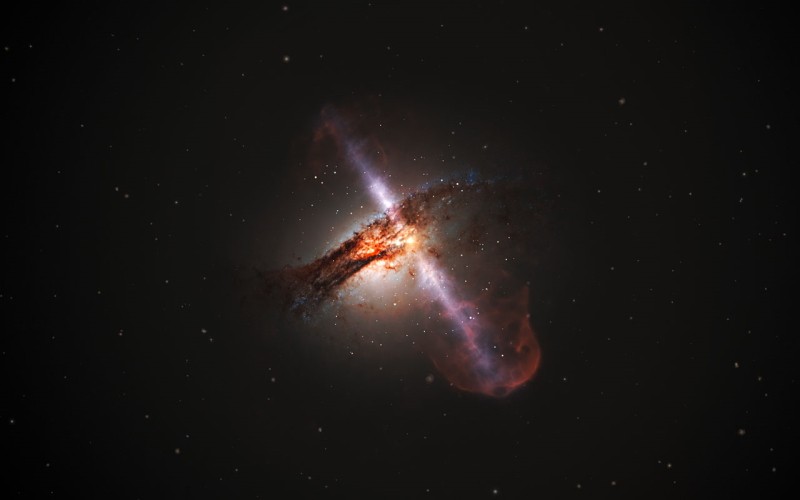
Powered by supermassive black holes swallowing matter in the centers of galaxies, Active Galactic Nuclei (AGN) are the most powerful compact steady sources of energy in the Universe. The brightest Active Galactic Nuclei have long been known to far outshine the combined light of the billions of stars in their host galaxies. Although the possibility of dust dimming the light from Active Galactic Nuclei has been recognized for a long time, the amount has been considered controversial and was widely believed to be negligible. Now, new research reveals that the energy output of Active Galactic Nuclei has been underestimated by not recognizing the extent to which their light is dimmed by dust and Active Galactic Nuclei (like Quasars and Blazars) are much more powerful than previously thought.
First US Satellite Explorer I – 65 Years Ago Today

During 1957, the US and the Soviet Union worked diligently on plans to orbit satellites as part of the 1958 International Geophysical Year (IGY). Given the Cold War competition between the two superpowers, the first to launch a satellite could claim technological preeminence. The Soviet Union leaped ahead of the US and stunned the world when they orbited Sputnik 1, the world's first artificial satellite on October 4, 1957. Through the combined efforts of JPL and the Army Ballistic Missile Ballistic Agency, Explorer 1 launched from Cape Canaveral, Florida on Jan. 31, 1958 -- 65 years ago today. There was a nail-biting wait before tracking stations confirmed that Explorer 1 had gone successfully into orbit around Earth. With the launch of Explorer 1, the United States officially entered the space age. Explorer 1 followed a looping flight path that orbited Earth once every 114 minutes. The satellite went as high as 2565 kilometers (1594 miles) and as low as 362 kilometers (225 miles) above Earth. Explorer 1 stopped transmitting when its batteries ran out on May 23, 1958. It stayed in orbit for a dozen years, making a fiery reentry over the Pacific Ocean on March 31, 1970.
20 Years Ago – Remembering Columbia and Her Crew

The year 2003 was shaping up to be an ambitious one for NASA, with six space shuttle missions planned, five to continue construction of the ever-growing and permanently occupied International Space Station. The first flight of the year, STS-107 aboard NASA’s oldest orbiter Columbia, the first shuttle mission dedicated to microgravity research in nearly five years, would not travel to the space station but fly a 16-day solo mission. The seven-member crew would conduct many of the 80 planned U.S. and international experiments aboard a Spacehab Double Research Module in Columbia’s payload bay. The astronauts’ exceeded scientists’ expectations in terms of the science obtained during their 16 days in space. Tragically, the astronauts perished when Columbia broke apart during reentry on Feb. 1, 2003.
Funding Member
Sponsors
- OMI OPTICS USA LLC
- AstroMart LLC
- Bob's Knobs
- astronomy-shoppe
- Astromart Customer Service
- FocusKnobs
- RemoteSkies.net
- BBLABS LLC
- Waite Research
- BW
- Matsumoto Company
- Desert Sky Astro Products
- APM-Telescopes
- SellTelescopes.com
- Rouz Astro
- ASTROPHOTOGRAPHY BY MARTIN PUGH
- Anacortes Telescope
View all sponsors
